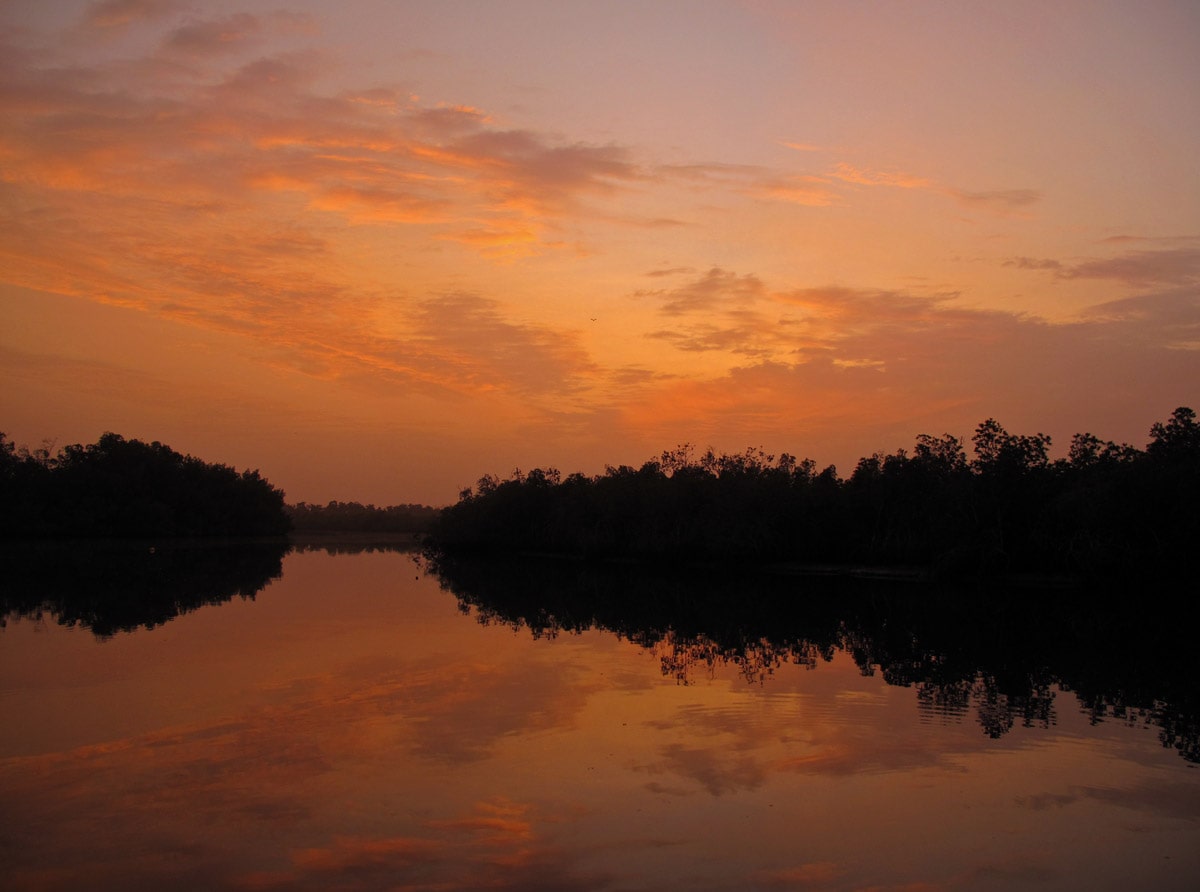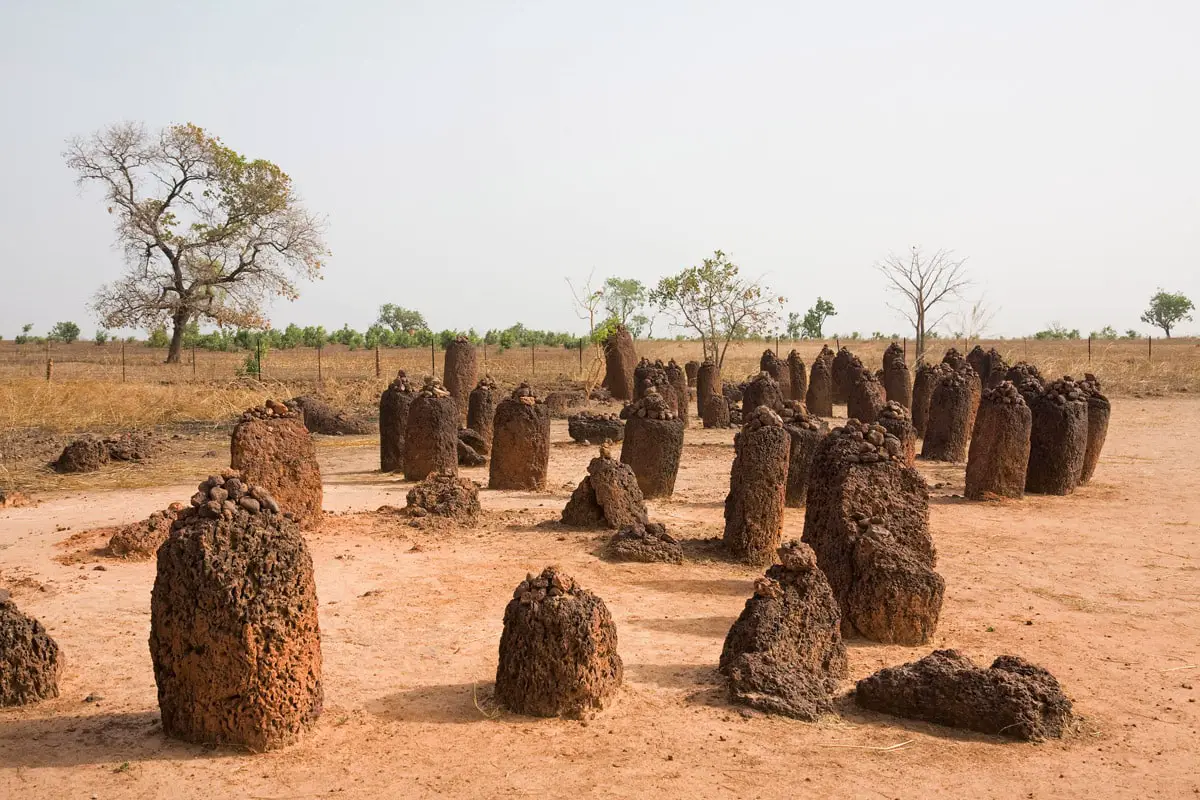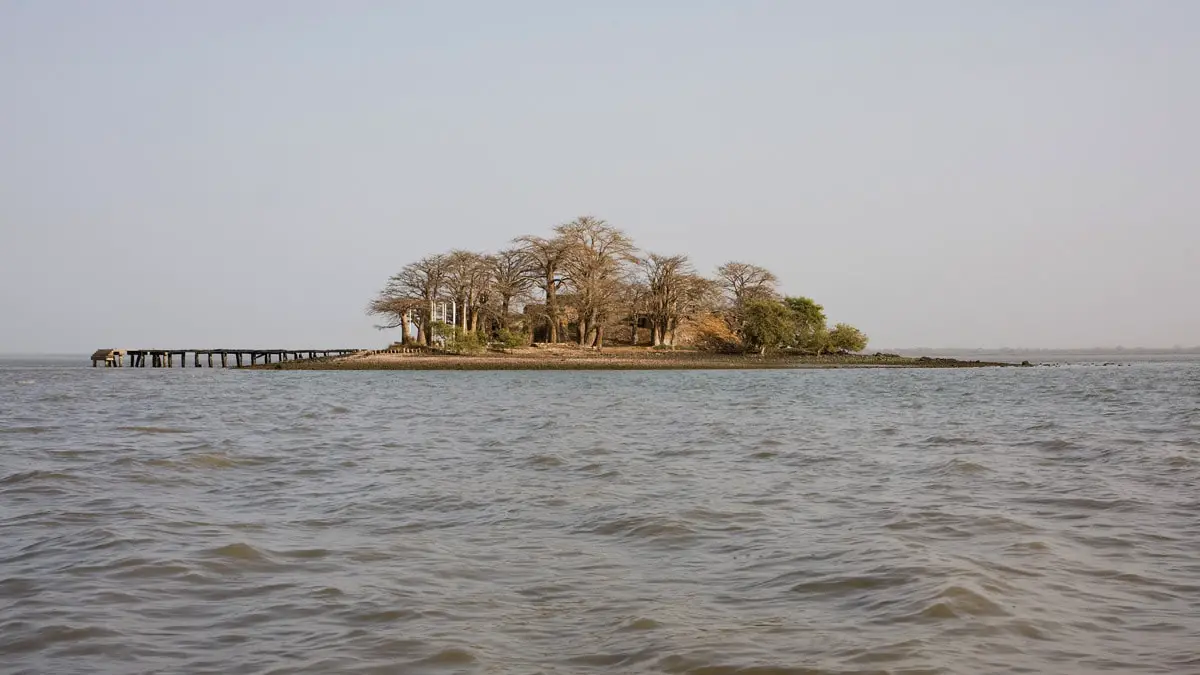Wondermondo 🢖 World 🢖 Wonders of Africa 🢖 Wonders of Gambia
Territory
Wonders of Gambia

 Highlights
Highlights
Gambia is the smallest mainland country in Africa. There are not too many landmarks in this lowland country but some are very interesting. Highlights of Gambia are the numerous megalithic stone circles and European built fortifications both to support and to stop the slave trade.
Map with the described wonders
If you see this after your page is loaded completely, leafletJS files are missing.
 Top 13 wonders of Gambia
Top 13 wonders of Gambia
Biological wonders
Pirang cotton trees
Western (Gambia)
Two giant cotton trees (Ceiba pentandra), the largest is 43 m tall. The circumference of the largest tree at the ground is 50 – 60 m, but just a bit higher the circumference is much smaller.
Archaeological wonders
Wassu stone circles
Central River
Group of 11 stone circles and other megaliths, erected in the time period between the 7th and 9th century AD. Stones are up to 2.5 m high, there are later burials inside the circles.

Kerbatch megaliths (Kerr Batch)
Central River
Group of 9 stone circles (including a double circle) and other megaliths built in the burials of local chefs. Stones have been shaped into cylindric or polygonal forms, one stone has an odd V shape, unique for megaliths.
Kau-Ur stone circle (Kauur)
Central River
Megalithic stone circle.
Niani Maru stone circles
Central River
Group of 8 stone circles.
Lamin Kotu stone circle
Central River
Small stone circle.
Legendary and architecture wonders
Makasutu Cultural Forest
Western (Gambia)
Site of legends, a thick forest at Mandina Bolon stream. Site of legends – according to locals this forest is haunted by djinns and here earlier (or even today) was living the beast called Ninki-nanka, similar to dinosaurs.
Kunta Kinteh Island (James Island) with Fort James
North Bank
Fort, built by the Duchy of Courland in 1651 and abandoned in 1870. Fort played important role in the Western African slave trade.

Six-Gun Battery
Banjul
A fortification that was built in 1816 to prevent the slave trade.
Maurel Frères Building
North Bank
Historical house, built by the British sometime around 1840. Now it houses a Museum on the Slave Trade in Senegambia.
Albreda chapel
North Bank
Ruins of Portuguese built chapel that was constructed in the late 15th century.
Arch 22
Banjul
Large monument – 35 m tall arch over a road that leads into Banjul. Arch was built in 1996 to mark the coup d’etat that overthrew the democratically elected government.
Fort Bullen
North Bank
This fortification was built in 1826 in order to prevent the slave trade. It was built here because the Six-Gun Battery on the south shore of the Gambia River could not reach this side of the river.
 Recommended books
Recommended books
The Gambia (Bradt Travel Guides)d
Small in size but rich in African character, The Gambia and its resort-dotted coastline offer perhaps the closest English-speaking ‘winter sun’ destination from Europe. The interior, dominated by the lush jungle-fringed Gambia River, is home to plentiful birds and monkeys, time-warped traditional villages, and mysterious megalithic sites.
A History of the Gambia
Originally published in 1940, this book contains a history of the West Coast of Africa from the invasion by the Portuguese in 1455 until 1938, when the area was under British control. Gray, who was a judge on the Supreme Court of the Gambia at the time, documents the often-bloody colonial developments in the area and the ‘many vicissitudes of fortune’ that the area had gone through since the first arrival of white people on its shores. This book will be of value to anyone with an interest in the colonial history of Africa.


